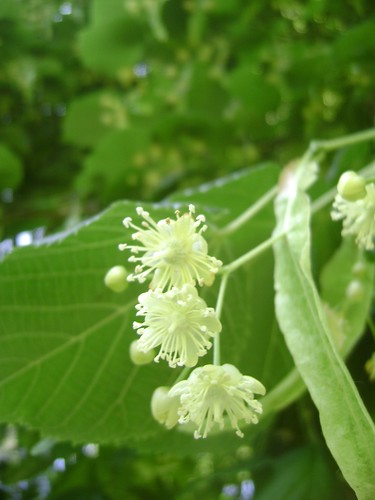The Smell of Freedom - 2014 Edition of "Smells Like Canada"
BARTLET: Smell? MRS. LANDINGHAM: How did you know?
BARTLET: It's the smell of freedom...and the chemicals they treat the dashboard with.
(Aaron Sorkin, "The West Wing", S2 E21 "18th and Potomac")
I've covered almost any scent that I consider Canadian in the last 2 years since I've started "Smells Like Canada". Douglas fir, maple syrup, rhubarb, tobacco, mildew, snow, artemisia (known in this parts of the world as "sage" even though it's not), elderflowers, Canadian gin, cherry red cedar, and castoreum from the Canadian beaver. To that list I can only add two more scents that somehow got ignored in previous years:
1) Black Locust (Robinia pseudoacacia) aka False Acacia - a native to the Eastern parts of the continent; and which smells like a sweet blend between heliotrope and orange blossom.
2) Linden blossoms (Tilia vulgaris) which although are not native to here, are in full bloom at this very moment, and line many of the streets and boulevards of Vancouver, painting the city's olfactory landscape with the colour of clear, blue sky.
3) Sweet Grass (Hierochloe odorata), aka Holy Grass or Vanilla Grass -
neatly braided and ceremonially burnt by the prairie First Nation people for its coumarin-sweet character to invite positive energy into the circle (after it's been cleansed with sage).
This year I want to focus on what freedoms smells like. To the fictional American President Bartlett it's the smell of new car. What is it to you?
To me it's the smell of chlorine as you approach the pool in the summer. The smell of hay stacks on which you can jump and free-fall with complete oblivion to any risk of injury. The scent of saltwater and marine life at low tide - complete with fermented seaweed, muscles and barnacles and jet fuel and boat fuel. And the knowledge that for the next few hours the world's worries will come to a halt because you're at the beach. The smell of coconutty tanning oil and tropical sunscreen won't hurt either. But now I'm really getting carried away...
No matter what smell association freedom, summertime or Canada has to you - freedom itself is priceless. And the commitment to this value is what makes this country so special. Of course it doesn't hurt that we're not really at war with anyone, at least not at our borders. Which of course makes for a lot less conflict of interest between "freedom" and "safety". Something that a lot of Canadians are either not aware of - or just haven't ever needed to experience that kind of conflict.
To be a Canadian means to live in peace, in a country where everyone is indeed considered equal, and where the mandate in public schools is to educate our young children to accept the other without prejudice. As long as public schools are open (which is a whole other issue...). Additionally we get to drink clean water and breathe pure air. Or at least cleaner and purer than many other countries - both industrial and third world ones. Yes, we can be better, but that does not mean we should not appreciate what we do have going for us. Not to mention we don't need to worry about our kids getting kidnapped, or murdered, by terrorists, and that pretty much tops it all, doesn't it?
We are truly blessed.
And now, to this year's contest: What does freedom smell to you? Add your thoughts in the comment section, or add any Canadian smells that I might have missed.
Winner gets a mini of my Gaucho perfume, which is the closest thing to the smell of sweetgrass; and incense cones that are inspired by the First Nations ceremonial smudging. It has tobacco leaf and sage (true sage from the Mediterranean, not the white sage grown locally). It smells amazing, and I only share this with very few people.




